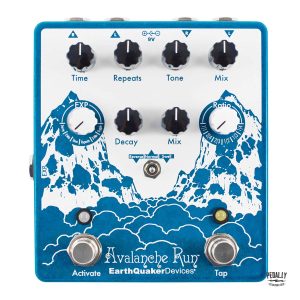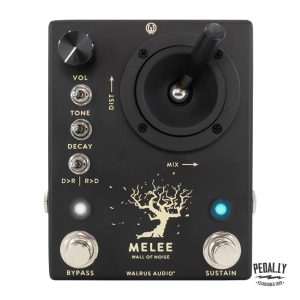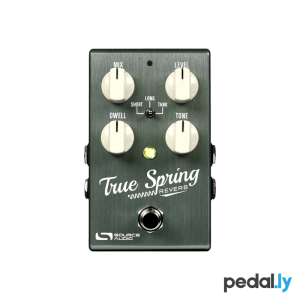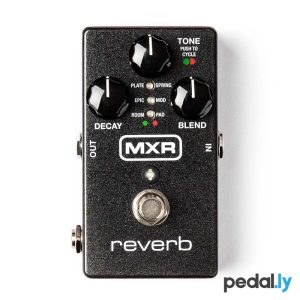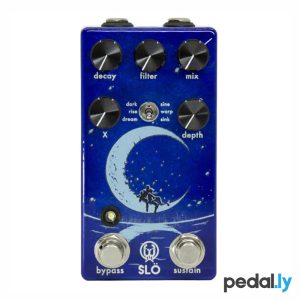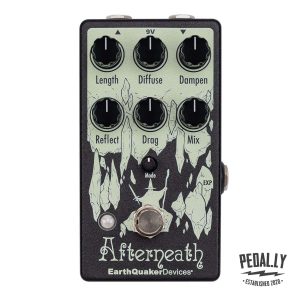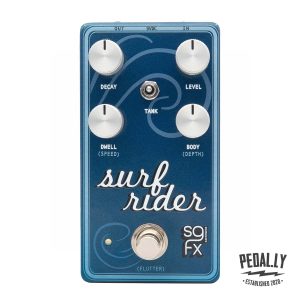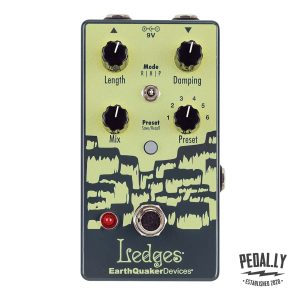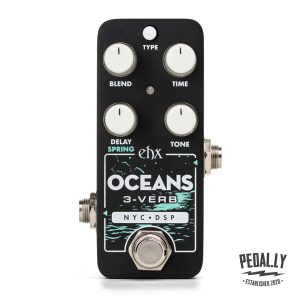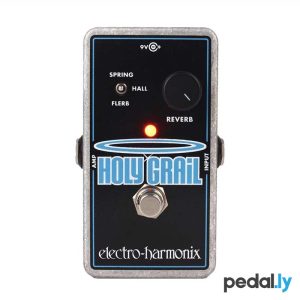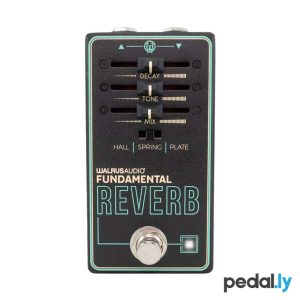Reverb Pedals
REVERB PEDALS
-
Surfy Industries SurfyBear Compact Reverb Unit
$375.00 Add to cart -
Walrus Audio MAKO Series R1 High Fidelity Stereo Reverb Pedal
$349.99 Add to cart -
EarthQuaker Devices Avalanche Run™ Stereo Reverb & Delay with Tap Tempo Pedal
$349.00 Add to cart -
Walrus Audio Black Melee Wall of Noise Distortion + Reverb Pedal
$299.99 Add to cart -
Source Audio True Spring Reverb Pedal
$269.00 Add to cart -
MXR Reverb Pedal (M300)
$235.99 Add to cart -
Walrus Audio Slo Multi Texture Reverb Pedal
$219.99 Add to cart -
EarthQuaker Devices Afterneath V3 Enhanced Otherworldly Reverberator Reverb Pedal
$219.00 Add to cart -
SolidGoldFX Surf Rider IV Spring Reverb Pedal
$209.00 Add to cart -
EarthQuaker Devices Dispatch Master V3 – Digital Delay & Reverb Pedal
$199.00 Add to cart -
EarthQuaker Devices Ledges Tri-Dimensional Reverberation Machine Reverb Pedal
$199.00 Add to cart -
Electro-Harmonix Oceans 11 Reverb Pedal
$176.00 Add to cart -
Electro-Harmonix Pico Oceans 3-Verb Reverb Pedal
$154.20 Add to cart -
Electro-Harmonix Holy Grail Nano Reverb Pedal
$137.90 Add to cart -
Walrus Audio Fundamental Series Reverb Pedal
$129.99 Add to cart -
Mooer ShimVerb Reverb Pedal
$90.00 Add to cart -
Mooer SkyVerb Reverb Pedal
$88.00 Add to cart
What is a Reverb Pedal?
A reverb pedal is a type of guitar effect pedal that is used to simulate the sound of natural reverberation in a room or space. Reverb is an essential component of many styles of music, from rock and pop to jazz and classical.
Reverb pedals work by processing the guitar signal to simulate the sound of a room or space. This effect can be subtle, adding a touch of natural ambience to a guitar’s sound, or it can be more pronounced, creating a larger, more atmospheric sound.
Reverb pedals typically have controls for adjusting the type and intensity of the reverb effect, as well as parameters such as decay time, pre-delay, and high-frequency damping. Some pedals also offer additional controls for adjusting the tone or shape of the reverb effect.
Reverb pedals have been used in a wide variety of musical styles and can be found in many famous songs across different genres. Some popular examples of songs that use reverb include “Purple Haze” by Jimi Hendrix, “Where the Streets Have No Name” by U2, and “Under the Bridge” by the Red Hot Chili Peppers.
A good reverb pedal is an essential tool for any guitarist looking to add depth and dimension to their sound. The right reverb pedal can help create a more immersive, atmospheric sound that can enhance the emotional impact of your playing.
The Types of Reverb Effects
There are several different types of reverb effect, each of which produces a distinct sound and feel. Here are some of the most common types:
Spring Reverb: Spring reverb is a classic type of reverb effect that was used in many vintage amplifiers. It creates a bright, metallic sound that is reminiscent of a spring bouncing back and forth. It is often used in rock, surf, and country music.
Plate Reverb: Plate reverb was originally created by suspending a metal plate in a frame and then vibrating it with a transducer. Plate reverb is known for its smooth, rich sound and long decay time. It is often used in pop and rock music.
Hall Reverb: Hall reverb simulates the sound of a large concert hall or cathedral, with a long decay time and a lush, immersive sound. It is often used in classical and orchestral music.
Room Reverb: Room reverb simulates the sound of a smaller space, such as a living room or recording studio. It creates a more natural and subtle reverb effect that is ideal for acoustic guitar and vocal recordings.
Spring Tank Reverb: Spring tank reverb is a variation of spring reverb that uses a separate unit to generate the reverb effect. It produces a more complex and rich sound than standard spring reverb.
Reverse Reverb: Reverse reverb creates a unique, otherworldly sound by reversing the reverb effect, so that the attack of the note is reverberant and the decay is clean. It is often used in experimental and psychedelic music.
Shimmer Reverb: Shimmer reverb adds an ethereal, shimmering sound to the reverb effect, creating a dreamy, atmospheric sound. It is often used in ambient and post-rock music.
Each type of reverb effect has its own strengths and weaknesses, and the right choice will depend on the musical context and the desired sound. By experimenting with different types of reverb effect, you can find the one that best suits your playing style and the music you want to create.
How do I choose the best reverb pedal?
Choosing the right reverb pedal can be a challenging task, as there are many different types and models available. Here are some key factors to consider when choosing a reverb pedal:
Type of Reverb: Reverb pedals come in many different types, including spring reverb, plate reverb, hall reverb, and many more. Each type of reverb produces a different sound, so it’s important to consider which type of reverb would work best for your playing style and the music you want to create.
Control Features: Reverb pedals have different control features, such as decay time, reverb mix, and tone shaping. Look for a pedal with easy-to-use controls that allow you to dial in the perfect amount of reverb for your playing.
Quality: Sound quality is an essential factor when choosing a reverb pedal. Look for a pedal that produces a clean and transparent sound, with no unwanted noise or distortion. Watch our demo videos on the product pages to get a feel for how the different pedals sound.
Versatility: Consider whether you want a reverb pedal that is versatile and can be used for a wide range of sounds and styles, or one that is specialized for a specific sound or genre.
Size and Power: Consider the size and power requirements of the reverb pedal. Smaller pedals are more portable, but larger pedals may offer more features and controls. Some of the larger reverb pedals can draw up to 400mA of power. Make sure your pedal power supply port can handle this amount of current.
Budget: Reverb pedals are available at a wide range of price points. Consider your budget and choose a pedal that offers the features and sound quality you need at a price point that works for you.
While there is a lot to consider when selecting a reverb pedal, there are so many good reverbs available, it is hard to make a bad choice in this category.
If you want an even stronger and longer lasting spatial effect, check out our collection of delay pedals.



